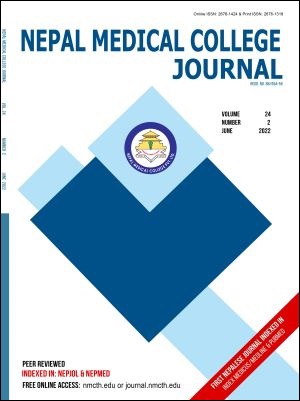Patterns of prescription and adverse drug reaction profile of Non- Steroidal Anti-Inflammatory Drugs at orthopedic out-patients department
DOI:
https://doi.org/10.3126/nmcj.v24i2.46045Keywords:
Prescription pattern, adverse drug reaction, non-steroidal antiinflammatory drugs, naproxenAbstract
Non-steroidal Anti-inflammatory Drugs (NSAIDs) are the most prescribed drugs all over the world. These are used in the treatment of pain and inflammation. Systematic evaluation of prescription patterns and monitoring of adverse drug reactions is required to increase the therapeutic benefit and decrease the adverse effects of these drugs. An observational, cross-sectional study was conducted for 6 months from September 2021 to February 2022 in 300 patients prescribed least one NSAID to assess the prescription patterns and adverse drug reaction profile (ADR) of NSAIDs prescribed in the orthopedic outpatient department. Among enrolled patients 52% were female and 48% were male. The most common age group was 20-39. The average number of drugs per prescription was 2.89. A total of 868 drugs were prescribed, out of which 402 were NSAIDs (46.31%). Naproxen was the most prescribed agent (45.02%), followed by Diclofenac (17.17%). ADR was reported in 12% of patients. Most of the ADRs were due to Naproxen (72.18%) followed by Ibuprofen (16.66%). The gastrointestinal system was involved in maximum patients and the most common ADR was abdominal pain. Most of the drugs were prescribed by brand name 95.18%. Naproxen was the most prescribed NSAID and responsible for most ADRs. There was a higher prevalence of irrational prescribing, polypharmacy, and underreporting of ADR. A strategy must be developed and implemented for prescribing and rational use of NSAIDs and monitoring their harmful effects.
Downloads
Downloads
Published
How to Cite
Issue
Section
License
Copyright (c) 2022 Nepal Medical College Journal

This work is licensed under a Creative Commons Attribution 4.0 International License.
This license enables reusers to distribute, remix, adapt, and build upon the material in any medium or format, so long as attribution is given to the creator. The license allows for commercial use.




